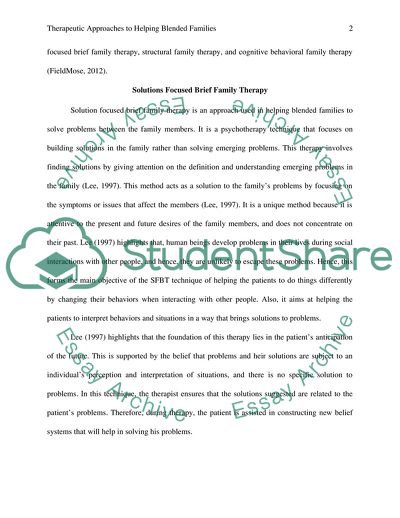Cite this document
(Therapeutic Approaches to Helping Blended Families Coursework Example | Topics and Well Written Essays - 2000 words - 1, n.d.)
Therapeutic Approaches to Helping Blended Families Coursework Example | Topics and Well Written Essays - 2000 words - 1. https://studentshare.org/psychology/1787472-therapeutic-approaches-to-helping-blended-families
Therapeutic Approaches to Helping Blended Families Coursework Example | Topics and Well Written Essays - 2000 words - 1. https://studentshare.org/psychology/1787472-therapeutic-approaches-to-helping-blended-families
(Therapeutic Approaches to Helping Blended Families Coursework Example | Topics and Well Written Essays - 2000 Words - 1)
Therapeutic Approaches to Helping Blended Families Coursework Example | Topics and Well Written Essays - 2000 Words - 1. https://studentshare.org/psychology/1787472-therapeutic-approaches-to-helping-blended-families.
Therapeutic Approaches to Helping Blended Families Coursework Example | Topics and Well Written Essays - 2000 Words - 1. https://studentshare.org/psychology/1787472-therapeutic-approaches-to-helping-blended-families.
“Therapeutic Approaches to Helping Blended Families Coursework Example | Topics and Well Written Essays - 2000 Words - 1”. https://studentshare.org/psychology/1787472-therapeutic-approaches-to-helping-blended-families.


